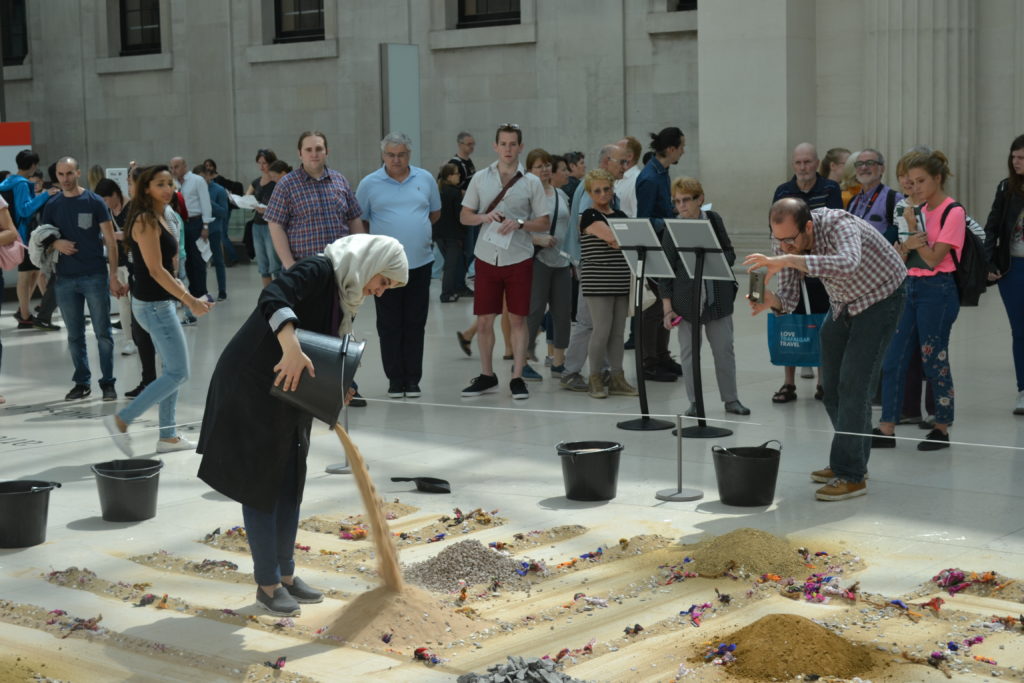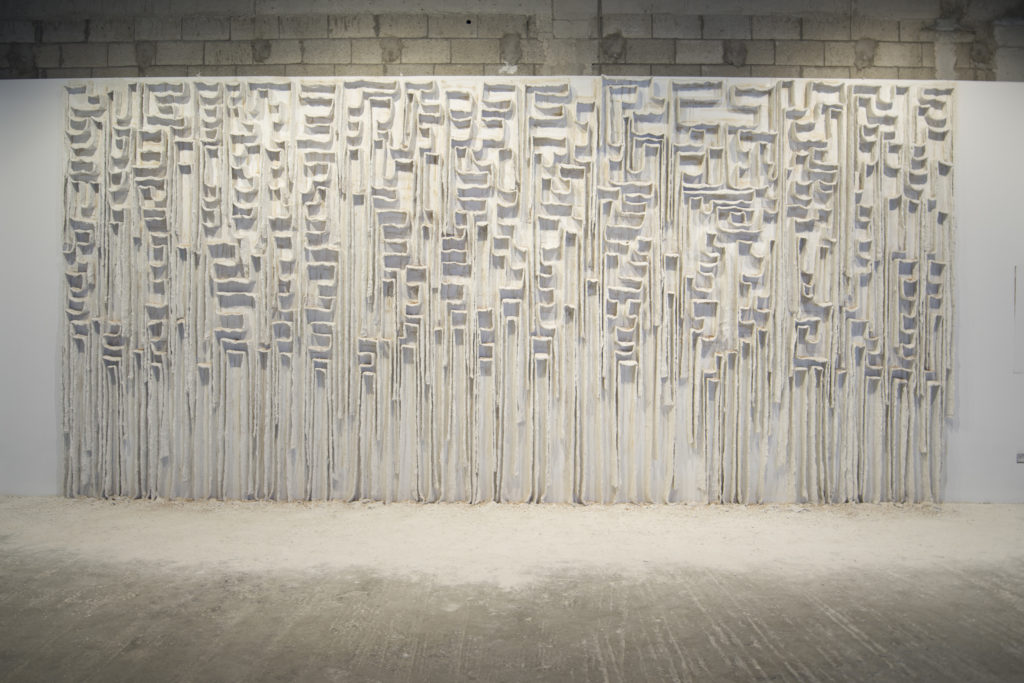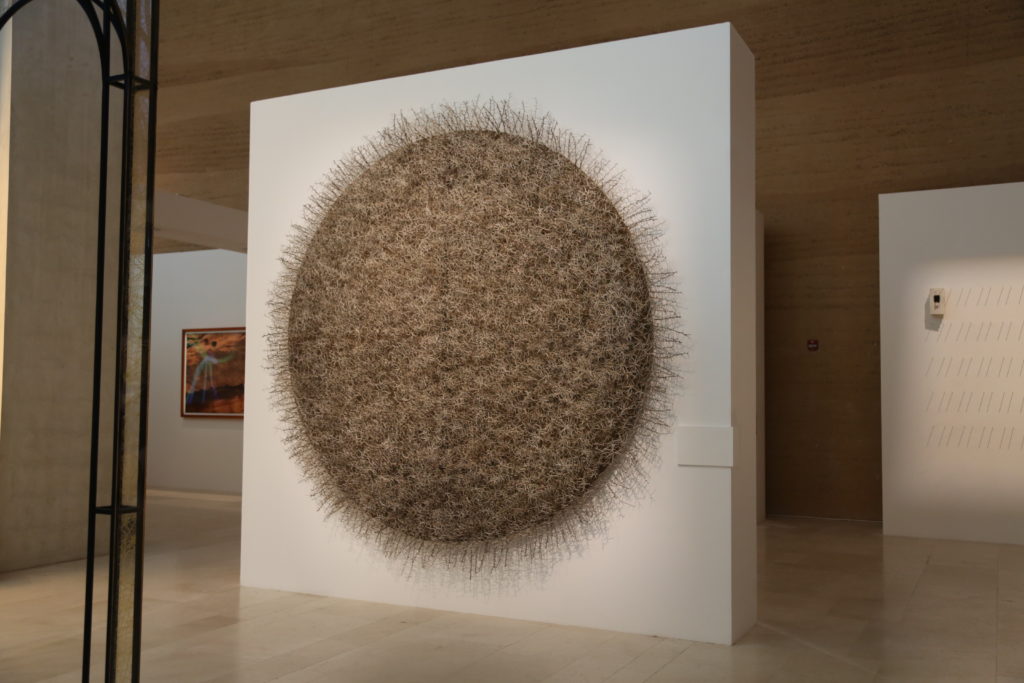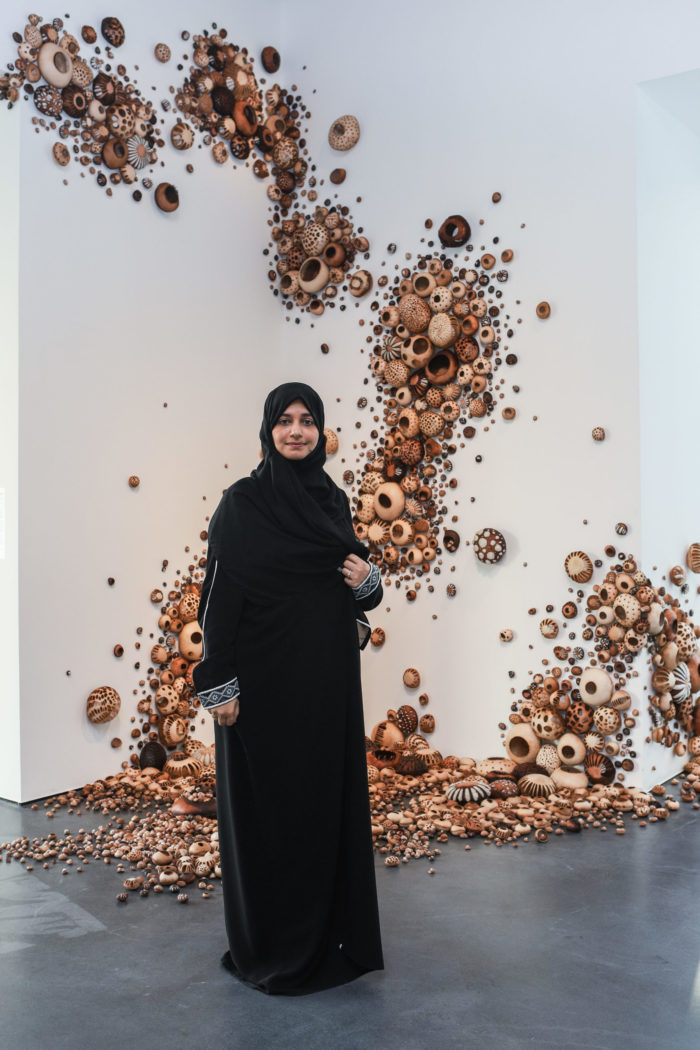A joint study on teenagers led by Bilkent in Turkey has formed a frightening and disheartening conclusion. Instead of being preoccupied by the growing pains of teenagehood; about what to wear to the next school dance or how to spend their afternoon, the average teenager is paralyzed by the fear of failure. This epidemic amongst teeangers contributes to crippling anxiety and depression. However saddening this notion is, it is a relatable one. These fears trickle across age groups, borders and social hierarchies. Not only does this fear of failure handicap one’s ability to function, but it also robs the individual of a fundamental part of their personal fulfilment and betterment, joie de vivre, and but most importantly the virtue of patience. A virtue that has worked in Saudi artist Zahrah Al Ghamdi’s favor.
“I am a professor in the Islamic Arts Department at King Abdulaziz University. When I am approached by my students and artists who show me their work, I tell them: I’m 42 years old now, and have only made an impact in the art world six years ago,” explains Zahrah Al Ghamdi. “This does not upset me or make me despair, as all those previous years have contributed to my practice.”

Al Ghamdi (b. 1977, Al Baha, Saudi Arabia) is a force of nature. She swims against the tide of traditional artistic practices and allies herself with patience, resilience, and most importantly the assurance that each of her artworks are endowed with an element of her spirit . “It will take time to prove oneself,” she continues, “Some people think that you need to be an artist and must succeed right from the start but no, you have to learn by being forgiving of yourself.”
Al Ghamdi describes her work as Land Art, also sometimes referred to as Earth/Environmental Art, an art movement that emerged in the 1960s and 1970s. Land Art is a particular form of artistic language that utilizes raw materials such as soil, vegetation, and rocks to formulate a finished product.
In her formative years living in the southern region of Saudi Arabia, Al Ghamidi’s fascination with her natural environment began. Her attraction to being a Land Artist stems greatly from a childhood meandering the valleys, farms, and pastures in her surroundings. Her experiences are meticulously mirrored in her installations, and like a memory fades away. In fact, what makes Land Art so distinctive is that most land art installations are ephemeral. They are made of natural elements that are expected to age or disappear over time. Due to its short life-span, they are seldom exhibited in museums or acquired by a collector. Regardless, Al Ghamdi stayed true to herself and her vision.
“I found myself moving towards the direction of artists like Robert Smithson, artists whose work I was deeply attracted to, especially those that use natural materials,” Al Ghamidi elaborates, “ After this I found myself in the studio directing myself towards sand and other raw materials. […] When I was in a residency in Switzerland for three months, I left my comfort zone and focused on creating land art.”
This choice did not come without controversy. Regardless of her striking work, galleries were initially conflicted about showing her Land Art. Her art, which spotlights her natural environment, has created a quandary for gallery owners due to the lack of permanence of her installations. They could not be moved out of the gallery once an exhibition is over, consequently making her pieces unsellable.

Despite their function as mechanisms that express her personal truths, there remains an extreme lack of incentive for gallery owners to take the risk in displaying her work. But this did not stop Al Ghamdi, in fact it made her push her concepts even further. “I asked them to take a chance on my artwork and to focus on the end result and impact of my work. And in my beginnings, during 2014, the exhibition’s audience praised my work, changing the mind of the gallery.” The positive response to Al Ghamdi’s work did not stop there, as foreign visitors attended exhibitions she was showcased in, and consequently a multitude of opportunities opened up for her.
She boasts that each exhibition she participated in, along with her perseverance against negative critique allowed for her career to skyrocket. Her attitude towards ‘success’ is the antithesis of social media culture’s obsession with obtaining likes and superficiality. Al Ghamdi’s idea of success, was having faith in her audience and being recognized for being true to her craft.
Her accolades are astounding given the short six years she has professionally been active in Saudi Arabia’s art scene. Her most recent solo exhibition, An Inanimate Village, was displayed at Athr Art Gallery, Jeddah (2015). Her most recent group exhibitions include: Safar, 21,39 Jeddah Arts, Jeddah (2017), Letters, Athr Art Gallery, Jeddah (2017); Earth and Ever After, 21,39, Jeddah Arts, Jeddah (2016). Al Ghamdi’s large-scale, site specific installations are included in the British Museum, and was part of that year’s Shubbak Festival of Arab Culture, London, UK (2017) and Al Serkal Avenue in Dubai, UAE (2016). However, her biggest achievement was being invited to participate at the Venice Biennale (2019).
“There are some works that have a deeper effect on me,” she professes,”In particular a work that has created a shift in my thoughts, was Mycelium Running (2019), an installation I worked on for the Venice Biennale.” Al Ghamdi describes this particular work as one that influenced her, rather than the other way around. The pieces she created for that installation took over eight months to complete. Mycelium Running is made up of hand molded burnt leather which was then stuffed with cotton wool, soaked and later hollowed and hardened. The artwork is made of a cluster of circular shapes, resembling a hive housing an unknown species. Each one of the 52,000 abstract particles are both distinct and complex. They are a nod to her birth village Al Baha, the place where she first fell in love with nature.
When the work reached completion, the end result was a complete surprise to Al Ghamdi. She could not have imagined the final work when she started, the project was speaking to her and shaping her instead. “Every work I have created has its own specific feeling or relates to a certain situation I’ve experienced. They create a paradigm shift within me, they transform me from one level to the next.”

Al Ghamdi lives by certain pillars that have undoubtedly contributed to her success. She claims that one must seek visual and aesthetic nourishment. To diversify your visual palette, one must constantly research and be inquisitive, spend time in solitude, and dedicate that time in their studio. And once again, one must have patience.
“You have to also be patient with where you display your work,” she says,” Maybe the first time it’s going to be within a gallery without repute. However, you have to start somewhere. But don’t despair, there are many that despair too early. […] Their art is not their priority, but comes second to other obligations. However, when your art becomes your priority, and even if it might seem like it’s a losing battle, be patient.”
Having faith in one’s creativity, message, or passion might seem impossible in a world full of distractions, or on a lesser scale, distractions like social media that divert us from more fulfilling ventures and chip away at our self-esteem. It is easy to believe in such falsehoods, like one is past their prime or that one is simply not good enough. “Sometimes people will give you their opinions, and their critiques might help you improve, while others might give you idiotic ones. So I go home and I choose the opinions that help push me forward,” she says.
But as Zahrah Al Ghamdi would say, it takes time, have faith, dedicate your time to your craft and education. But most importantly, a myriad of accolades and an impressive resume does not make an artist. What makes an artist is the will to create beyond oneself, to develop and progress in the face of adversity. An artist creates artwork not for praise but for connection, and most importantly to embrace their artistic journey with patience.
A version of this article was featured in Khaleejesque’s September 2019 issue.
Words: T. Khalifa
Images: Zahrah Al Ghamdi, Art Jameel
zahrahalghamdi.com







